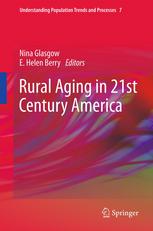

Most ebook files are in PDF format, so you can easily read them using various software such as Foxit Reader or directly on the Google Chrome browser.
Some ebook files are released by publishers in other formats such as .awz, .mobi, .epub, .fb2, etc. You may need to install specific software to read these formats on mobile/PC, such as Calibre.
Please read the tutorial at this link: https://ebookbell.com/faq
We offer FREE conversion to the popular formats you request; however, this may take some time. Therefore, right after payment, please email us, and we will try to provide the service as quickly as possible.
For some exceptional file formats or broken links (if any), please refrain from opening any disputes. Instead, email us first, and we will try to assist within a maximum of 6 hours.
EbookBell Team

0.0
0 reviewsThis book investigates sociological, demographic and geographic aspects of aging in rural and nonmetropolitan areas of the United States. Population aging is one of the most important trends of the 20th and 21st centuries, and it is occurring worldwide, especially in more developed countries such as the United States. Population aging is more rapid in rural than urban areas of the U.S. In 2010, 15 percent of the nonmetropolitan compared to 12 percent of the metropolitan population were 65 years of age and older. By definition rural communities have smaller sized populations, and more limited healthcare, transportation and other aging-relevant services than do urban areas. It is thus especially important to study and understand aging in rural environments. Rural Aging in 21st Century America contributes evidence-based, policy-relevant information on rural aging in the U.S. A primary objective of the book is to improve understanding of what makes the experience of rural aging different from aging in urban areas and to increase understanding of the aged change the nature of rural places. The book addresses unique features of rural aging across economic, racial/ethnic, migration and other structures and patterns, all with a focus on debunking myths about rural aging and to emphasize opportunities and challenges that rural places and older people experience.